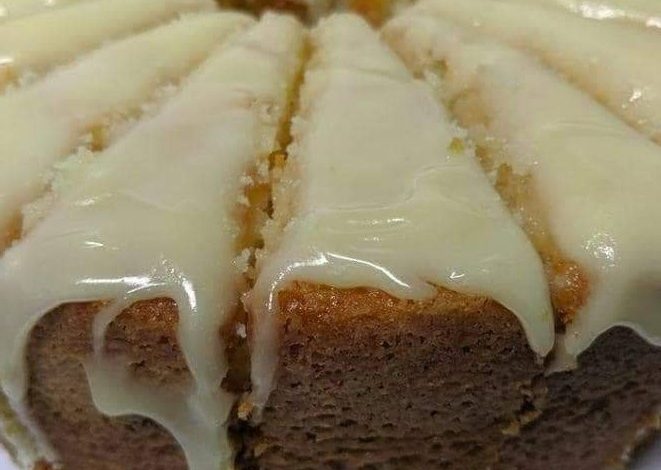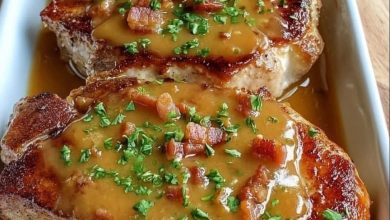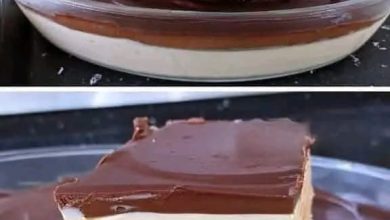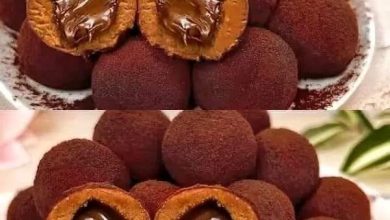
ADVERTISEMENT
The Bundt Cake: A Timeless Classic with Endless Variations
The Bundt cake is a beloved dessert that has become synonymous with elegant simplicity. Recognizable by its characteristic ring shape and often elaborately detailed sides, the Bundt cake is more than just a treat—it’s a centerpiece for gatherings, celebrations, and everyday indulgence. This article explores the history, variations, and preparation of the Bundt cake, offering insights into why this cake has remained a staple in kitchens around the world.
The History of the Bundt Cake
The Bundt cake’s origins can be traced back to Europe, where similar ring-shaped cakes were traditionally baked in molds called “Gugelhupf” or “Kugelhopf” in Germany and Austria. These cakes were typically yeast-based and filled with fruit and nuts. However, the Bundt cake as we know it today was popularized in the United States in the 1950s and 1960s.
The name “Bundt” was trademarked by Nordic Ware, a cookware manufacturer in Minnesota, which introduced the now-iconic fluted pan design. The design was intended to mimic the European cake molds but made with aluminum, making it lighter and more affordable. The Bundt pan’s popularity soared after a Bundt cake recipe called the “Tunnel of Fudge” won second place in the 1966 Pillsbury Bake-Off, leading to a surge in demand for the pans and the cakes made in them.
Key Ingredients and Preparation
The Bundt cake is a versatile dessert that can be made in countless flavors, but the basic ingredients and preparation techniques are relatively consistent across variations. The key ingredients typically include:
- Flour: All-purpose flour is commonly used, though some recipes may call for cake flour for a lighter texture.
- Sugar: Granulated sugar is standard, though brown sugar or a mix of sugars can add depth of flavor.
- Butter or Oil: Butter provides a rich flavor and tender crumb, while oil can make the cake exceptionally moist.
- Eggs: Eggs act as a binder and help to create a light, fluffy texture.
- Leavening Agents: Baking powder and baking soda are used to ensure the cake rises properly.
- Flavorings: Vanilla extract is a common addition, but lemon zest, almond extract, or spices like cinnamon can be used to tailor the cake’s flavor.
- Buttermilk or Sour Cream: These ingredients add tanginess and moisture, making the cake tender.
Preparation Process:
ADVERTISEMENT
- Preheat the Oven and Prepare the Pan: Preheat your oven to the temperature specified in your recipe. Grease the Bundt pan thoroughly with butter or non-stick spray, ensuring all the crevices are covered, and dust it with flour to prevent sticking.
- Cream the Butter and Sugar: In a large mixing bowl, cream the butter and sugar together until light and fluffy. This step is crucial for incorporating air into the batter, which helps the cake rise.
- Add the Eggs and Flavorings: Beat in the eggs one at a time, followed by the vanilla extract or other flavorings.
- Incorporate the Dry Ingredients: In a separate bowl, whisk together the flour, baking powder, and any spices. Gradually add the dry ingredients to the wet mixture, alternating with the buttermilk or sour cream.
- Bake the Cake: Pour the batter into the prepared Bundt pan, smoothing the top with a spatula. Bake in the preheated oven until a toothpick inserted into the center comes out clean, usually 45-60 minutes, depending on the recipe.
- Cool and Unmold: Allow the cake to cool in the pan for about 10-15 minutes before inverting it onto a wire rack to cool completely. This cooling time helps the cake set and makes it easier to remove from the pan without sticking.
- Glaze or Frost the Cake: Once the cake has cooled, it can be drizzled with a glaze, dusted with powdered sugar, or frosted. A simple glaze made from powdered sugar and milk or cream is a classic choice, but other options include cream cheese frosting, chocolate ganache, or a lemon glaze.
Popular Variations of Bundt Cakes
One of the joys of Bundt cakes is their versatility. Here are some popular variations:
1. Lemon Bundt Cake: A zesty lemon Bundt cake is made with fresh lemon juice and zest, often paired with a tangy lemon glaze. This version is perfect for spring and summer gatherings.
2. Chocolate Bundt Cake: Rich and decadent, a chocolate Bundt cake is a favorite for chocoholics. It can be made with cocoa powder or melted chocolate and topped with a chocolate ganache for an extra indulgent treat.
3. Pumpkin Spice Bundt Cake: This variation is perfect for fall, combining pumpkin puree with warm spices like cinnamon, nutmeg, and cloves. A cream cheese glaze adds a sweet and tangy finish.
4. Red Velvet Bundt Cake: A twist on the classic red velvet cake, this Bundt cake is made with cocoa powder and buttermilk, giving it a rich, tangy flavor. It’s often topped with a cream cheese frosting.
ADVERTISEMENT
5. Marble Bundt Cake: This cake features a swirl of vanilla and chocolate batters, creating a beautiful marbled effect when sliced. It’s a crowd-pleaser with its combination of flavors and striking appearance.
Tips for the Perfect Bundt Cake
1. Proper Pan Preparation: Greasing and flouring the Bundt pan thoroughly is essential to ensure the cake releases easily after baking. You can also use a non-stick spray with flour to make this step easier.
2. Don’t Overfill the Pan: Leave some space at the top of the pan when filling it with batter, as the cake will rise during baking. Overfilling can cause the cake to spill over or bake unevenly.
3. Even Baking: Bundt cakes are thick and can take a while to bake through. To ensure even baking, place the Bundt pan on the middle rack of the oven, and if you’re using a dark-colored pan, consider reducing the oven temperature slightly to prevent the edges from over-browning.
4. Cool Before Inverting: Let the cake cool in the pan for 10-15 minutes before inverting it onto a wire rack. This cooling period helps the cake firm up slightly, making it less likely to break apart when unmolded.
ADVERTISEMENT
5. Add the Glaze at the Right Time: For a glaze that soaks into the cake, apply it while the cake is still warm. If you prefer a glaze that sits on top, wait until the cake has cooled completely.
The Cultural Significance of Bundt Cakes
The Bundt cake has become an integral part of American baking culture, often associated with celebrations, potlucks, and family gatherings. Its iconic shape makes it a visually appealing centerpiece, and its rich history adds a sense of tradition to any occasion.
While the Bundt cake is particularly popular in the United States, its influence has spread globally, with variations appearing in kitchens around the world. In Europe, similar cakes are baked for holidays and special events, while in Asia and Latin America, the Bundt cake has been adapted to include local flavors and ingredients.
Conclusion
The Bundt cake is a classic dessert that continues to stand the test of time. Its unique shape, moist texture, and versatility make it a favorite for bakers and dessert lovers alike. Whether you’re baking a simple vanilla Bundt cake or experimenting with more complex flavors, the Bundt cake is a dessert that never disappoints. Its ability to adapt to different tastes and occasions ensures that it will remain a beloved treat for generations to come.
This article offers a comprehensive overview of the Bundt cake, discussing its history, preparation methods, variations, and cultural significance. Whether you’re a seasoned baker or a novice in the kitchen, the Bundt cake is a dessert that everyone can enjoy making
ADVERTISEMENT




